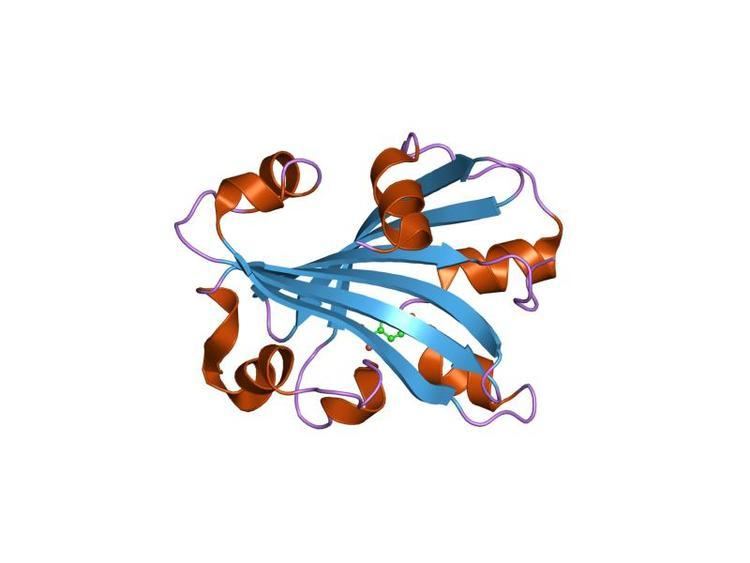EC number 4.1.3.40 ExPASy NiceZyme view | CAS number 157482-18-3 | |
 | ||
In enzymology, a chorismate lyase (EC 4.1.3.40) is an enzyme that catalyzes the chemical reaction
Contents
chorismateHence, this enzyme has one substrate, chorismate, and two products, 4-hydroxybenzoate and pyruvate.
This enzyme belongs to the family of lyases, specifically the oxo-acid-lyases, which cleave carbon-carbon bonds. The systematic name of this enzyme class is chorismate pyruvate-lyase (4-hydroxybenzoate-forming). Other names in common use include CL, CPL, and UbiC.
This enzyme catalyses the first step in ubiquinone biosynthesis, the removal of pyruvate from chorismate, to yield 4-hydroxybenzoate in Escherichia coli and other Gram-negative bacteria. Its activity does not require metal cofactors.
Catalytic activity
Enzymatic activity
Inhibited by:
Pathway
The pathway used is called the ubiquinone biosynthesis pathway, it catalyzes the first step in the biosynthesis of ubiquinone in E. coli. Ubiquinone is a lipid-soluble electron-transporting coenzyme. They are essential electron carriers in prokaryotes and are essential in aerobic organisms to achieve ATP.[1]
Nomenclature
There are several different names for chorismate lyase. it is also called chorismate pyruvate lyase (4-hydroxybenzoate-forming) and it is also abbreviated several different ways: CPL, CL, and ubiC. It is sometimes referred to as ubiC, because that is the gene name. This enzyme belongs to the class Lyases; more specifically the ox-acid-lyase or the carbon-carbon-lyases.
Structure
This enzyme is a monomer. Its secondary structure contains helixes, turns, and beta strands.
